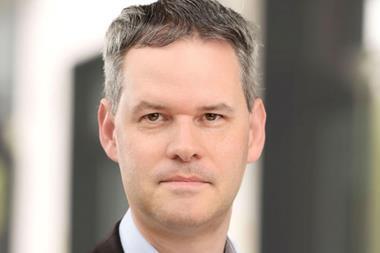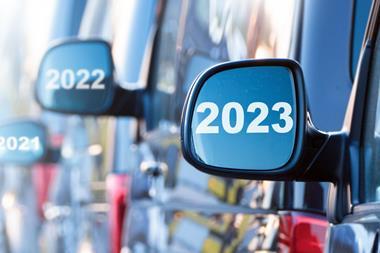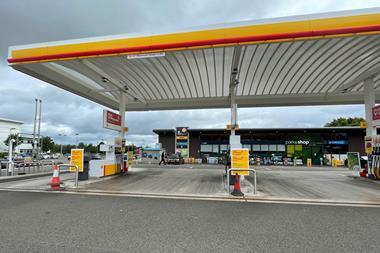The number of petrol stations serving the motoring public has been falling for years but suddenly, it seems, the whole world is beginning to take an interest, with coverage in the national press and on TV and radio bemoaning the loss of the community forecourt.
The latest figures from forecourt network specialist Catalist show that at least 150 petrol stations went out of business in the first six months of 2007, with a total of 300 expected to close by the end of 2007 - that amounts to nearly one a day.
This will leave just 9,300 forecourts still operating in the UK. The last time the figure was so low was in 1912 - when King George V was on the throne, the suffragettes were getting their campaign into full swing and the Ford Model T was all the rage.
Ironically, despite the heavy publicity in the national press, the figures could be looked at in a positive way - the rate of service station closures has actually slowed. The Catalist figures show that three years ago the annual rate of closure was nearing 600, and the industry was in panic.
However, while the slowing rate of closure is a good sign, this doesn’t take away from the fact that up and down the country, garages are continuing to shut up shop or go out of business as they struggle to adapt to today’s trading conditions. And industry pundits can see no sign that the fierce competition within the petrol retail arena will abate anytime in the near future.
With more drivers than ever on the road, there is a declining population of forecourts to service them, and they are beginning to find it hard to find a garage where they can fill up - particularly in more rural areas.
The number of forecourts in the UK has been declining for years, but since 2000, when the UK was hit by the fuel price protests, the petrol station population seems to have been in free fall.
At the end of 2001 there were about 12,300 forecourts in the country. By the end of 2006, that figure had dropped to 9,500.
Independent petrol stations have borne the brunt of the demise, accounting for about two-thirds of last year’s closures. Many sites, especially in urban areas, have been snapped up by developers, offering attractive prices for much-needed housing.
== property boom ==
Booming property prices mean that garages once happy to continue trading, are more valuable for the land they occupy than their business potential - at least in the short term.
Who can blame an independent retailer for selling up when estate agents specialising in forecourt real estate are seeing the highest prices for years?
Meanwhile, profit margins on fuel are being squeezed till the pips squeak, which is why the sharpest retailers have diversified into successful convenience retailing businesses, and oil companies, with a poor track record of skills in the retail arena are keen to offload more of their sites - either to canny independents growing their networks, or for property redevelopment.
Ray Holloway, director of the Petrol Retailers’ Association (PRA), blames the supermarkets for today’s balding network.
"The beginnings of today’s situation can be traced back to 1973 and the oil crisis - it’s amazing to think that at their peak, in 1974, there were an estimated 74,000 petrol stations.
"After that the decline really got going when the supermarkets started expanding into the sector in the mid-90s, often offering cheap petrol to entice drivers to shop at their out-of-town stores. It was then that it started to have a major effect on lowering prices."
"People think that if the fuel’s cheap then everything else must be. And supermarkets can afford to keep prices very low - that’s the problem for smaller retailers.
"Independents are seeing their profits squeezed more and more because they’re trying to compete on price. There have been surveys where people filling up at supermarkets are asked if they know what they’re paying at the pumps. And they have no idea.
"It’s not a price war now, it’s a war of perception."
But far from perception, the reality is that motorists could soon have trouble finding somewhere to refuel if closures continue at the current rate.
In rural areas, the average distance between stations is already seven miles.
The PRA believes the answer to saving the nation’s fuel stations lies in the government getting involved. Holloway has called on Westminster to ban supermarkets from selling petrol at below cost price. The subject is especially topical at the moment because the Office of Fair Trading is soon to decide whether to refer the supermarket sector in general to the Competition Commission. This follows complaints that supermarket giants are too dominant.
== supermarket surge ==
There is no doubt the supermarkets are growing at an astounding rate in the forecourt sector. The sector now accounts for about a third of all petrol sales, compared to 11% in 1992, according to the UK Petroleum Industry Association (UKPIA).
Meanwhile, the amount of fuel sold to motorists overall is up by just 2% since 1991.
The PRA is also looking for support from local authorities in the form of structure plans which would allow for maintenance of services like forecourts.
Holloway adds: "Some business-rate relief is available to forecourt operators in rural areas, but not in urban locations. But a lot of closures are now in urban areas.
"We need to revisit the scheme and extend the rate reductions to towns and cities - otherwise we will lose these essential services.
"It’s a well-known fact that when you don’t have any effective competition, the consumer pays more. And they will."
The same applies to post offices and small shops - it’s a case of use them or lose them.
England and Wales also need to catch up with Scotland, where a grant scheme is available for forecourt operators from the Scottish Executive. It is available to help them with capital investment.
The grants are part of the Rural Petrol Stations Grant Scheme (RPSGS), which is one of three grant schemes which make up the Scottish Executive’s Rural Transport Fund - set up in 1998 to improve transport in rural areas of Scotland.
The Scottish Executive recognises that cars are a necessity for many people in rural Scotland and it is therefore vital for residents to be able to access a forecourt relatively easily.
According to its website, the scheme was set up "to support the retention of a sustainable and accessible network of fuel supply throughout rural Scotland".
The grants are available for projects such as helping rural filling stations with the cost of replacing tanks, pumps and pipework, relining tanks, meeting groundwater protection requirements and implementing Petrol Vapour Recovery (PVR) controls.
The scheme also assists with the installation of tanks and dispensers for the provision of Liquefied Petroleum Gas (LPG).
To qualify for a grant, a forecourt must be at least 30 minutes drive time from the edge of town with a population of over 30,000 people and needs to sell lead-free petrol and diesel.
It must also prove that the business is viable in the long term and has the ability to return a reasonable operating profit. Forecourt operators who qualify can apply for up to 50% of eligible costs.
However, it’s not all doom and gloom for petrol retailers in the rest of the UK. In fact, according to Holloway, it’s just the opposite.
"It’s very easy to just take the cheque," he says. "That may seem attractive but you have two possibilities when you own the property. You can make the improvements yourself and enjoy the benefits - or you can sell and maybe someone else will enjoy the benefits.
"Motorists can find a ’local’ offer very appealing, especially if it is teamed with other vital services such as a post office or a decent convenience store.
"Don’t just assume that the estate agent will hand over the biggest cheque. The biggest cheque might come further down the line through continuing to run the business."
----
=== UK Market ownership ===
No of Average % Market % Outlet Effectiv-
Ownership Outlets Volume (kl pa) Share Share eness
COMPANY 2,198 4,875 29.3% 23.3% 1.26
DEALER 6,055 2,212 36.6% 64.2% 0.57
HYPERMARKET 1,179 10,595 34.0% 12.5% 2.73
UK Total 9,432 ? ? ? ?





























No comments yet